Market Finds: April 10, 2024
Other finds
- Longtime family owned 1989 Lotus Turbo Esprit 37,400 miles – $36,500
- 58,000-mile 1989 Mercedes-Benz 420 SEL highly original – $14,750
- One-owner 1997 Mitsubishi Eclipse GS-T Spyder 59,560 miles – $11,500
- Two-owner 1964 Chevrolet Corvette Convertible rare Saddle Tan – $61,900
- 34 years owned 1986 Porsche 944 Turbo 63,509 miles– $29,500
- One-owner 53,000-mile 1990 Jaguar XJS Convertible – $19,800
- 22,335-mile 1975 Chevrolet Cosworth Vega one of 2,061 – $15,999
- One of 400 1992 Lancia Delta Integrale Evo I under 4,000 miles – $259,000
- Single family owned 2008 Porsche Cayenne GTS 78,000 miles– $59,500
- Highly original 1978 BMW 320i two owners – $12,800
- Black-plate 1968 Volkswagen Type 3 Squareback 48,000 miles – $15,000
Gordon Murray Automotive Moves T.50 Supercar Production to New HQ
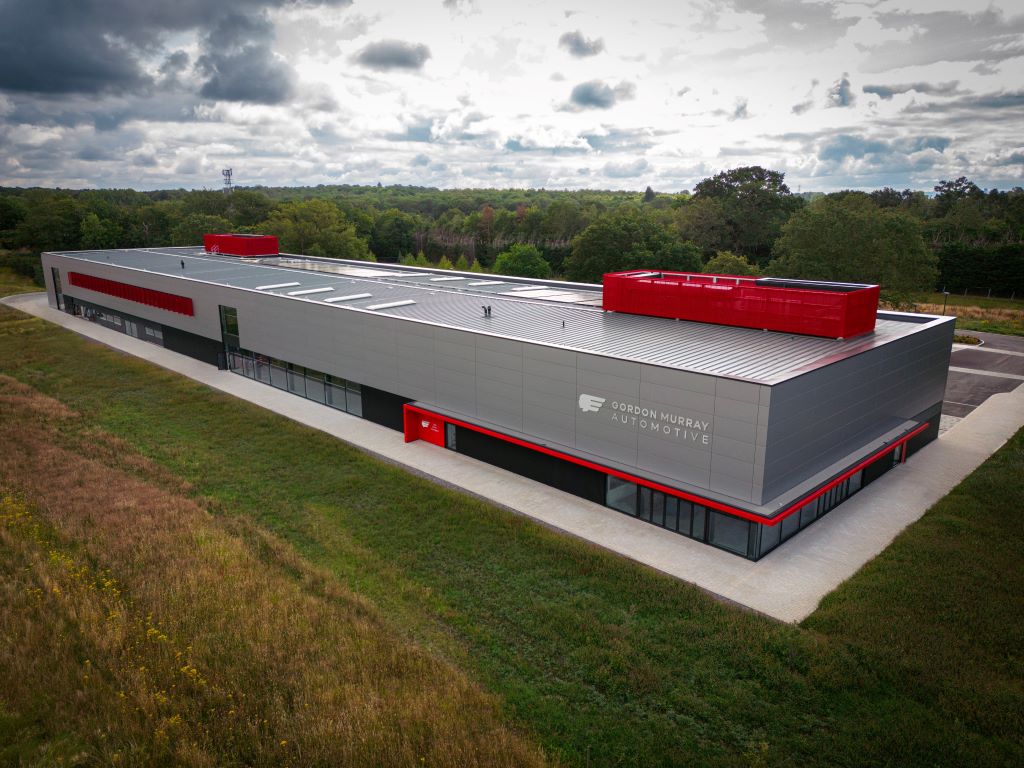
SURREY, UK (April 10, 2024) – Premium British vehicle manufacturer Gordon Murray Automotive (GMA) has announced a strategic move of its T.50 supercar production to the company’s newly-built Group headquarters at Highams Park, Surrey.
The new site has already taken over manufacturing of the GMA T.50 supercar from its previous production facility at Dunsfold Park. This decision will see T.50 manufacturing benefit from a wealth of efficiencies, while enabling the business to streamline carbon fiber monocoque production for T.33 prototypes and future models at Dunsfold Park. Used for development, testing and homologation-related crash testing, the monocoques will now be produced on-site, accelerating the supercar’s pre-production processes.
Building the new Gordon Murray Group HQ at Highams Park near the village of Windlesham saw investment of more than £50 million, and the creation of a broad range of specialized job roles to support full scale production. The new campus will be the Group’s global headquarters – home to a purpose-built 4,300 square meter Vehicle Production Centre, and the Gordon Murray Heritage collection. The site also features a specially-designed Vehicle Dynamics Test Road, used for final validation and pre-delivery checks of new GMA supercars – all set in 54 acres of beautiful English parkland. For customers opting to take delivery of their cars from Highams Park, the new HQ offers the ideal setting at its dedicated Driving Perfection Customer Centre where owners can specify, set-up, and take delivery of their GMA supercar.
“The new Gordon Murray Automotive HQ at Highams Park represents a significant investment for the business and is a statement of intent for the company’s future. It is extremely satisfying that we’re able to continue T.50 manufacturing at the new site, while also streamlining production of T.33 development prototypes.”
Phillip Lee, Gordon Murray Group CEO
Following the move to Highams Park, where all future GMA models will be produced, the company is on course to complete all 100 exclusive T.50 customer cars. The build of the 25 track-only T.50s Niki Lauda models will follow the completion of the T.50 run. Next, the production team will transfer to building the T.33 coupe, before that supercar’s open-top sibling – the T.33 Spider – enters the Highams Park Vehicle Production Centre.
The move to the new HQ will bring significant manufacturing efficiencies. The purpose-built site consolidates logistics, parts supply, and testing, while supercar production teams benefit from the latest technologies and optimized production layout, boosting efficiency, cross-team collaboration, and production quality.
“Moving production of our T.33 experimental prototype monocoques into the vacated Dunsfold Park facility accelerates the programme and boosts efficiencies significantly. We are already making excellent progress with T.33 development with our first three mule cars undergoing intensive early testing. The move means we’ll soon be at the stage to share details about the prototype with customers and fans around the world.”
Mofid Elkemiri, Gordon Murray Automotive CEO
In total, GMA will build more than 27 prototype versions of the timelessly-styled T.33 coupe and Spider for a combination of pre-production testing and development activities including chassis dynamics, aerodynamics, durability, performance, emissions, crash testing, and certification. The car will be fully homologated for all major markets including Europe and the United States. As part of the development, the team will perform more than 30 different crash tests with prototype vehicles.
Weighing just 1,090 kg, the six-speed manual T.33 will deliver the brand’s characteristic ‘Driving Perfection’ through obsessive attention to detail, exquisite design, and the 617 PS 3.9 liter Cosworth GMA.2 V12 engine that revs past 11,000 rpm. The model will follow production of the T.50s at Highams Park with just 100 coupe and 100 Spider models destined for owners around the world.
Gordon Murray Automotive adheres to seven core brand principles in all its products: Driving Perfection, Lightweight, Engineering Art, Premium Brand, A Return to Beauty, Exclusivity, and The Customer Journey. For more information about GMA, its supercars, and the company’s new headquarters at Highams Park in Surrey, visit GordonMurrayAutomotive.com.
Automobili Lamborghini Sends off V10 Huracán with Limted Edition STJ
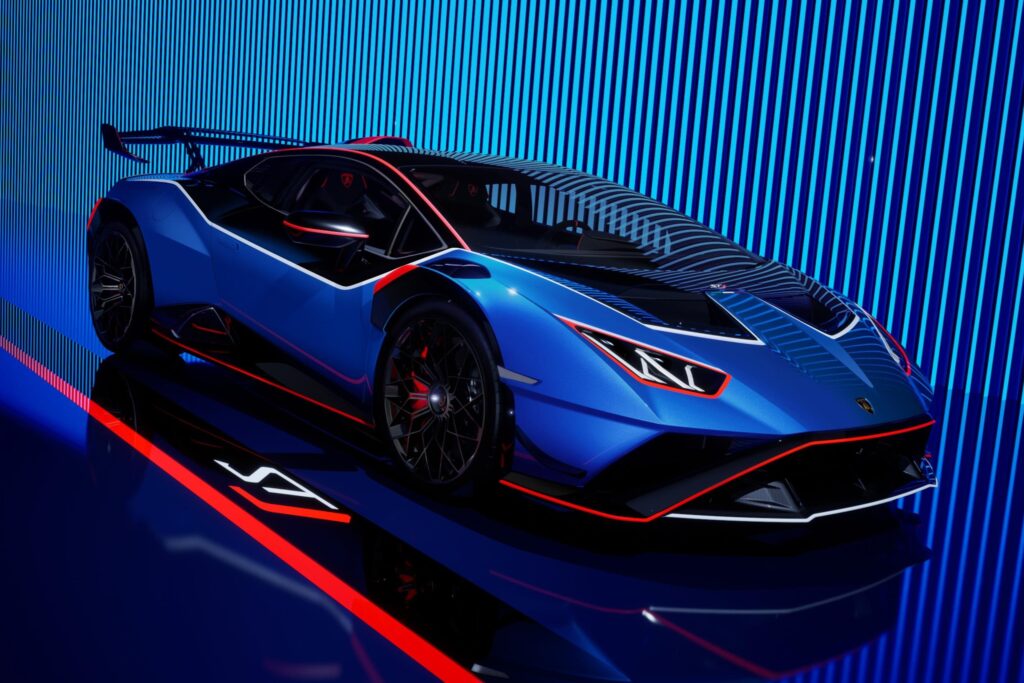
SANT’AGATA BOLOGNESE (April 10,2024) – Automobili Lamborghini presents the Huracán STJ, a limited edition of ten units and the last celebration of the super sports car equipped with the V10 engine, an engineering icon of the Sant’Agata Bolognese carmaker.
The naturally aspirated V10 engine is a symbol of Automobili Lamborghini’s history, contributing to the success of the Huracán family first presented in 2014, which by the end of the year will be replaced by an all-new super sports car equipped with a new hybrid powertrain.
With a design based on the Huracán STO[1], the STJ represents the pinnacle of performance achieved in the Huracán family’s history, thanks to the introduction of an exclusive package designed to further enhance the racing spirit of the Huracán STO. STJ stands for Super Trofeo Jota: Super Trofeo pays tribute to the Lamborghini one-make championship, established in 2009, while Jota refers to Appendix J of the FIA Regulations that sets the racing car specifications, and to a long tradition of Lamborghini models developed for the track, starting from the Miura SVJ and continuing with the Aventador SVJ.
The Huracán STJ stands out thanks to its dedicated aerodynamic package developed by Lamborghini Squadra Corse technicians, leveraging the know-how acquired over ten years at the top of Gran Turismo competitions. The sophisticated aerodynamics of the STO have been further improved with the addition of the iconic “cofango”: two all-new carbon fiber aerodynamic appendages (flicks), while the angle of the rear wing has been increased by 3° compared with the production model to ensure a 10% increase in aerodynamic load while keeping the car perfectly balanced.
Like the STO, the Huracán STJ delivers a maximum power output of 640 CV at 8000 rpm and a torque of 565 Nm (at 8000 rpm) controlled by a 7-speed dual clutch (LDF – Lamborghini Doppia Frizione) gearbox, combined with the rear-wheel drive only.
The mechanical grip has been increased significantly by a set of four adjustable racing-derived shock absorbers, which replace the standard active components. The shock absorbers are four-way adjustable to optimize the rebound and compression at both high and low frequencies, giving total freedom of choice in the set-up based on the track characteristics. The special characteristics of the shock absorbers allow lower spring stiffness to be used while maintaining optimal dynamic control of the car and increasing steering precision. To maximize the driving dynamics, special Bridgestone Potenza Race tires have been developed, made with a specific high grip compound and installed on 20” single-nut rims.
These technical features enabled an improvement of more than one second on the Nardò Technical Center Handling Track laptime compared to the Huracán STO.
The sporty character and exclusivity of the car are also reflected in the aesthetics, with two different configuration and livery options definitively designed by Lamborghini Centro Stile. The first combines Grigio Telesto (gray) bodywork combined with a Nero Noctis (black) roof and Rosso Mars (red) and Bianco Isi (white) details, while the cabin is characterized by Nero Cosmus (black) Alcantara seats with leather details and contrasting Rosso Alala (red) stitching. The second configuration has Blu Eliadi (blue) bodywork with a Nero Noctis (black) roof and Rosso Mars (red) and Bianco Isi (white) details. Both versions also feature a special, numbered carbon fiber plate marked “1 of 10”. In addition, there is the option to add a custom plate on the passenger side according to the customer’s instructions.
[1] Fuel consumption and emission values of Huracán STO; Fuel consumption combined: 13.9 l/100km (WLTP); CO₂-emissions combined: 331 g/km (WLTP)
All-New 2025 Toyota 4Runner is Evolutionary and Revolutionary
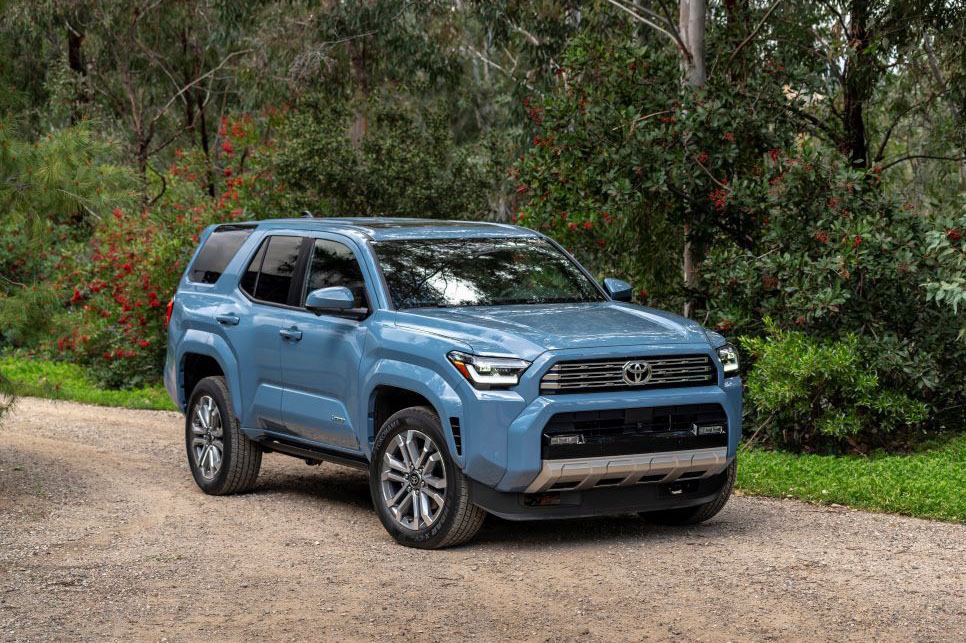
SAN DIEGO, Calif. (April 9, 2024) – The instant name recognition that 4Runner has built over the past four decades is undeniable. This legend has long established itself as a North American off-road icon, ready to tackle tough terrain in its way. The all-new 2025 Toyota 4Runner stays true to its original concept, as an extremely capable, dynamic, and durable off-roader and will continue to provide owners a window to bigger worlds. The new generation introduces a bold new look and adds new technology, premium materials, options, and safety. In fact, this all-new sixth generation 4Runner raises the bar in terms of go-anywhere capability and high-end refinement. The 2025 4Runner will be built in Toyota Motor Corporation’s Tahara plant in Japan and will arrive in the U.S. in the fall of 2024.
“This all-new 4Runner has incredible versatility and capability that nicely rounds out our truck family story. We’ve sold over 3 million in the 40 years it has been on sale, and this sixth-generation model offers a cool new look and incredible features, yet retains the rugged style and capability our customers love about this icon of adventure.”
Dave Christ, Toyota group vice president and general manager
Solid Foundation
4Runner is all-new from the ground up and is built on Toyota’s tough TNGA-F global truck platform that is shared with Tacoma, Land Cruiser, Tundra and Sequoia. This platform utilizes a high-strength boxed, steel-ladder frame and features a multi-link coil rear and double wishbone front suspension.
The adoption of the innovative TNGA-F platform not only adds strength, but it also improves the vehicle’s ride comfort and on-road manners. Passengers feel the benefits of this new platform, even when riding in the available third-row. The enhanced frame, paired with the powerful i-FORCE MAX powertrain, allows 4Runner to tow up to 6,000 pounds.
Evolving the Legacy
“Designing the legendary 4Runner began with identifying its unique and memorable aspects linked to fun, outdoor recreation,” says “Inspired by Baja desert racing, the high lift, lean body, big tire, rugged athleticism defines the core of 4Runner’s go anywhere purpose”.
Kevin Hunter, Calty President
The Michigan-based CALTY design team spearheaded the design of this all-new 4Runner. Designers pulled inspiration from the past while also focusing on the future. The all-new 4Runner was designed alongside the Tacoma and shares a family resemblance but is unique in its own way. Both share inspiration from the desert racing scene and have a rugged-with-a-purpose appearance. In a nod to the first and second generations of 4Runners, designers were able to bring back the legacy “wrap over” quarter glass, and the popular roll-down rear window remains etched into the vehicle’s DNA. The design team meticulously labored to achieve the ideal interior design. They sought to achieve a vehicle with ease of operation and a functional interface that strikes a pure balance of modern sophistication and capable authenticity. For example, second-row tumble seats help increase 4Runners interior versatility and maximizes cargo floor usage.
i-FORCE Power MAXed
This next chapter of 4Runner offers two powerful and efficient turbocharged 2.4 liter four-cylinder powertrains including the i-FORCE engine with 278 horsepower and 317 lb.-ft. of torque that is paired to an eight-speed automatic transmission. SR5, TRD Sport, TRD Off-Road and Limited grades will come standard with the i-FORCE powertrain.
4Runner’s i-FORCE MAX hybrid powertrain is available on TRD Off-Road and Limited, while standard on the TRD Pro, Trailhunter and Platinum models. This powertrain pairs the turbocharged 2.4-liter engine with a 48-hp electric motor integrated into the eight-speed transmission, feeding off a 1.87-kWh NiMH battery pack that creates a total system output of up to 326 horsepower and 465 lb.-ft. of torque, the most powerful powertrain ever offered on 4Runner.
Trail Ready
4Runner is synonymous with rugged capability. In its latest form, 4Runner continues to add increased capability to an already incredible legacy. The newly available Stabilizer Bar Disconnect Mechanism increases suspension articulation at the push of a button. This feature allows the vehicle to flex while helping keep tires in contact with the trail. 4Runner raises the bar in another area with up to 32-degree approach and 24-degree departure angles. The available Multi-Terrain Monitor system aids the driver allowing them to see potential hazards on the center display.
4Runner will be offered in 2WD, part-time 4WD or Full-time 4WD. 2WD models will feature an automatic limited-slip differential (Auto LSD), and four-wheel-drive models have an electronically controlled two-speed transfer case with high/low range along with Active Traction Control (A-TRAC) and an automatic limited-slip differential (Auto LSD). An electronic locking rear differential is standard on TRD Off-Road, TRD Pro and Trailhunter grades. The Limited is offered with an available a full-time four-wheel-drive system with a center locking differential on i-FORCE MAX models, while this setup is standard on Platinum grades.
The Multi-Terrain Select system now functions in both 4WD-High and 4WD-Low. This offers adjustable settings to help control wheel spin on a variety of terrain such as Mud, Dirt, and Sand. 4Runner also adopts the new, quieter CRAWL Control function that acts as a low-speed, off-road cruise control that allows the driver to focus on steering. When traction is extremely limited, the available electronically activated locking rear differential can help split power 50/50 to the rear wheels. Downhill Assist Control is another off-road feature available and helps the driver navigate descents by limiting the speed of the vehicle.
A Grade for Everyone
4Runner expands its grade offering to provide customers with more choices than ever before. Nine grades are available including SR5, TRD Sport, TRD Sport Premium, TRD Off Road, TRD Off Road Premium, Limited, Platinum, TRD Pro, and Trailhunter.
The Trailhunter grade has been added to the line up to allow owners to go further. 4Runner’s capability and durability have made it a fan favorite of overlanders, and now adventure seekers have a turnkey solution with a manufacturer-developed overland rig straight from the factory. Toyota collaborated with a number of off-road component companies to make the fit and finish that much better. For example, the Trailhunter will feature ARB’s Old Man Emu (OME) 2.5-inch forged shocks with rear external piggyback remote reservoirs, along with a uniquely co-designed ARB Roof Rack. The OME shocks along with the 33-inch Toyo Open Country A/T tires boost up Trailhunter an additional two inches in the front and one and a half inches in the rear. A standard low-profile high-mount air intake sources cleaner air for the standard i-FORCE MAX powertrain. Trailhunter adds protection that includes rock rails and high strength steel skid plates for serious off-the-grid-adventure capabilities. The Trailhunter is also equipped with a heritage grill with bronze “TOYOTA” lettering and an integrated 20-inch LED light bar that is complemented by color selectable RIGID LED fog lamps. A seriously powerful 2400W AC inverter provides juice to two locations in the cabin and the rear cargo area. Trailhunter is ready for customization with other Toyota accessory offerings using three easy to reach auxiliary switches that are pre-wired throughout the vehicle.
The 2025 4Runner introduces its first-ever Platinum grade which offers customers a high-end, luxury experience with all the capability you expect in a 4Runner. Platinum slots above the Limited grade by adding unique black exterior styling elements, heated second-row seats, a standard tow tech package, Head-Up Display and automatic rain sensing wipers.
Latest Tech
4Runner receives Toyota’s latest technology with new screens. A new 8-inch or available 14-inch multimedia touchscreen displays Toyota’s latest Audio Multimedia system, which is designed and engineered by Toyota’s Texas-based Connected Technologies team. The system supports wireless Apple CarPlay® and Android Auto™ compatibility, and pairs well with the available Qi wireless charging pad with enhanced power output. A USB-C data and charging port is integrated on the right side of the multimedia touchscreen, and dual USB-C charging ports are included in the front row and available for the rear passengers. A 7-inch gauge cluster is standard on lower grades and a 12.3-inch digital gauge cluster is standard on higher grades.
Smart Key System with push-button start is standard on all grades. With an active Remote Connect trial or subscription, an available Digital Key on select grades connects with compatible smartphones to allow vehicle entry, and vehicle starting (4G network dependent). The Digital Key can also be remotely shared with others to give more control over vehicle access rather than giving someone the physical key.
Rugged Choice
The all-new youthful and dynamic 4Runner nicely rounds out Toyota’s rugged lineup of tough body-on-frame vehicles. From the full-size Tundra to the iconic off-road legend Land Cruiser, customers now have five fresh trucks to choose from. These vehicles give customers more choice when it comes to finding a vehicle that can keep up with their dynamic lifestyles. They are designed to handle almost anything the elements throw their way, and their incredible capability gives owners the tools they need to get out and discover all the hidden wonders the world has to offer.
Toyota Safety Sense 3.0 Standard
All 2025 4Runner models come standard with Toyota Safety Sense 3.0, Toyota’s suite of active safety and convenience systems. This suite of features includes:
- Pre-Collision System with Pedestrian Detection
- Lane Departure Alert with Steering Assist
- Full-Speed Range Dynamic Radar Cruise Control
- Lane Tracing Assist
- Road Sign Assist
- Automatic High Beams
- Proactive Driving Assist
Proactive Driving Assist is now a part of Toyota Safety Sense. Proactive Driving Assist (PDA) uses the vehicle’s camera and radar, when system operating conditions are met, to provide gentle braking and/or steering to support driving tasks such as distance control between your vehicle and a preceding vehicle, pedestrian, or bicyclist. PDA can also provide gentle braking into curves. Proactive Driving Assist is not a substitute for the Pre-Collision System and operates in different circumstances.
Including the addition of Proactive Driving Assist, the Toyota Safety Sense features have been enhanced for TSS 3.0:
- The Pre-Collision System with Pedestrian Detection has enhanced detection capabilities thanks to new system sensors. It receives enhanced intersection support with improved detection capability in certain circumstances. In addition to pedestrian and bicyclist detection, this system now includes the capability to detect a motorcyclist.
- Lane Departure Alert will now provide Steering Assist as well as enhanced lane recognition that includes detection of certain 3D objects, like guardrails, that may be used to help define the lane.
- Dynamic Radar Cruise Control will have Full-Speed Range capability and adds a fourth following distance setting, from the previously available three. Enhanced vehicle detection allows for the ability to detect more than one preceding vehicle, as well as vehicles in adjacent lanes. This helps the system to provide smoother, more natural speed adjustments, especially when the driver changes lanes.
- Lane Tracing Assist requires Dynamic Radar Cruise Control to be enabled for it to function. The system requires detectable lane markings in order to function. Like Lane Departure Alert, lane recognition is enhanced over prior TSS generations. In addition to lane centering, this system also helps provide more space between vehicles being passed in adjacent lanes. It works by offsetting the vehicles’ driving path with minor steering adjustments while keeping the vehicle within its lane.
- An Emergency Driving Stop System is a new function of Lane Tracing Assist. It’s designed to monitor the driver’s inputs, such as steering operation, to determine if they’re inattentive or non-responsive, such as during a medical emergency. This feature is designed to bring the vehicle to a stop if the driver doesn’t respond to alerts to take control.
- Road Sign Assist is designed to detect speed limit signs, stop signs, Do Not Enter signs, yield signs, and certain warning signs, and display an icon of the sign on the Multi-Information Display (MID).
In addition to TSS 3.0, other available features include Blind Spot Monitor (BSM), which is designed to help detect and warn you of vehicles approaching or positioned in the adjacent lanes and Rear Cross-Traffic Alert (RCTA) for added peace of mind by helping to detect vehicles approaching from either side while backing out and alerting you with a visual and audible warning. Hill Start Assist Control (HAC) also comes standard.
Beyond Zero Vision
As part of Toyota’s diverse portfolio approach toward a carbon-neutral future, 4Runner is the latest hybrid offering in the lineup to wear the Beyond Zero badge. Very soon, Toyota will offer 19 electrified vehicles for customers to choose from. With the additions of Land Cruiser and Tacoma, Toyota will offer 15 hybrid models, two plug-in hybrid models, the bZ4X battery electric vehicle (BEV), and the zero-emission hydrogen fuel cell Mirai, Toyota provides more choices than any other automaker for customers to reduce their carbon footprint.
Limited Warranty
Toyota’s 36-month/36,000 mile basic new-vehicle warranty applies to all components other than normal wear and maintenance items. Additional 60-month warranties cover the powertrain for 60,000 miles and against perforation from corrosion for 60 months with no mileage limitation. Hybrid-related components that require repairs needed to correct defects in materials or workmanship are covered for 8 years/100,000 miles, whichever comes first from original date of first use when sold as new. The hybrid battery is covered for 10 years/150,000 miles, whichever comes first, and is transferable across ownership.
The 2025 4Runner also comes with ToyotaCare, a plan covering normal factory-scheduled maintenance, for two years or 25,000 miles, whichever comes first, and 2 years, unlimited mileage of Roadside Assistance.
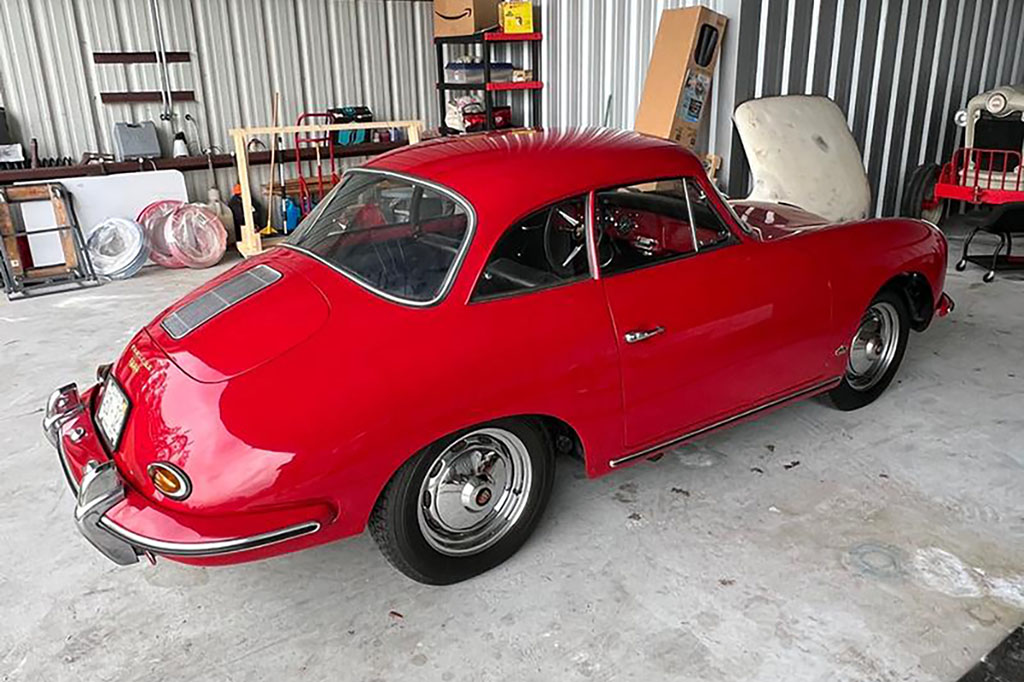
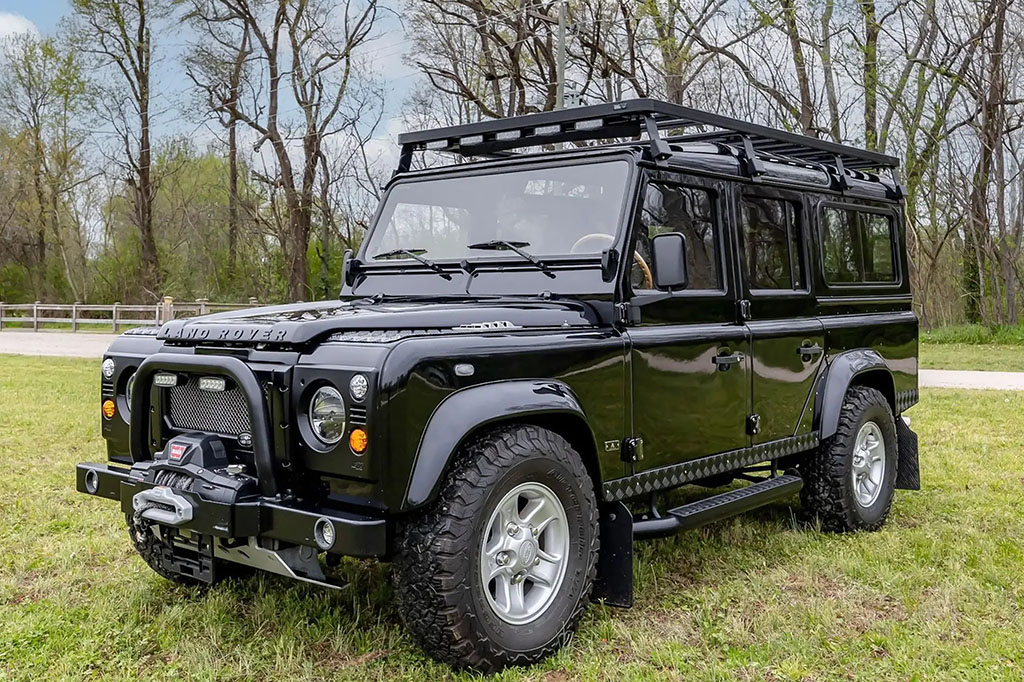
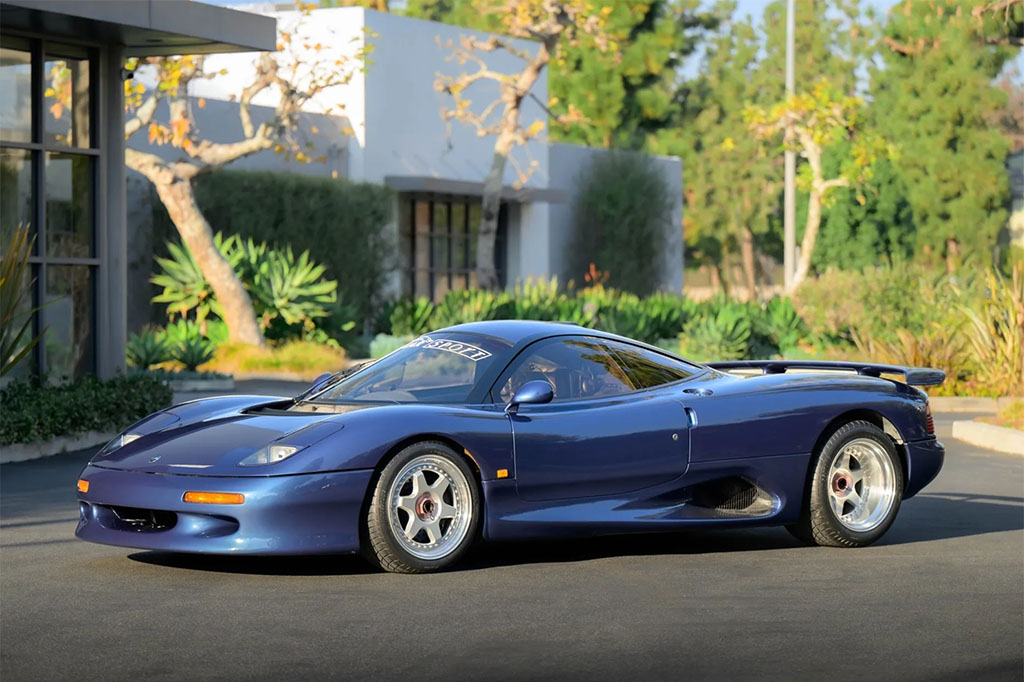
Leave a Reply
You must be logged in to post a comment.